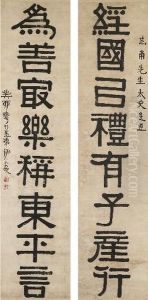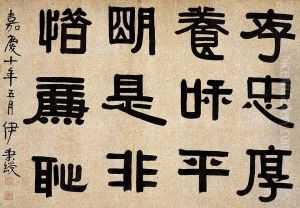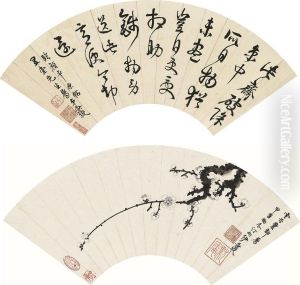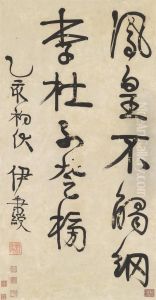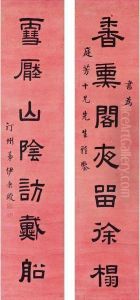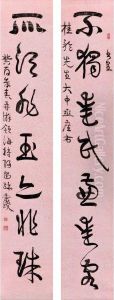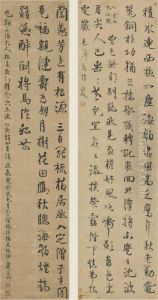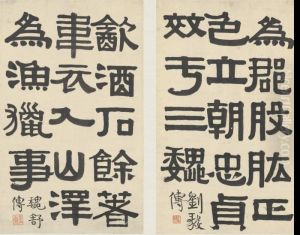Yi Bingshou Paintings
Yi Bingshou (simplified Chinese: 易秉綬; traditional Chinese: 易秉繡; pinyin: Yì Bǐngshòu) was a prominent Chinese calligrapher, painter, and official during the Qing Dynasty. Born in 1754, he was known for his proficiency in both the civil service and the arts, reflecting the dual expectations of the scholar-officials of his time.
Yi Bingshou's artistic talents were recognized early on, and he became well-versed in the classical styles of Chinese painting, particularly in landscapes and figures. He was also a master of calligraphy, adept in various script styles including the standard script (kaishu), running script (xingshu), and cursive script (caoshu). His calligraphy was highly esteemed for its elegance and strength, often embodying the scholarly ideals of his era.
As an official, Yi Bingshou held several posts. He served as the governor of Jiangsu province, where he was tasked with administrative duties and local governance. Despite his responsibilities, he continued to pursue his passion for art, integrating his scholarly knowledge with his artistic practice. His works were infused with Confucian principles and often carried moral and didactic messages, a reflection of his role as a Confucian scholar-official.
Yi Bingshou's paintings and calligraphy have been preserved in numerous collections, and his works are considered exemplars of Qing Dynasty artistry. He had a significant influence on later generations of artists and calligraphers, and his style was often imitated and studied by his contemporaries and successors. Yi Bingshou passed away in 1815, leaving behind a legacy that has contributed to the understanding and appreciation of the cultural and artistic achievements of the Qing era. His works continue to be admired for their technical mastery and scholarly depth.
